(first posted 2/21/2014) The oft-repeated apologia for the travails and downfall of GM during the eighties is that they were just so darn overwhelmed converting their traditional RWD cars to modern front-wheel drive technology. Their new FWD smaller cars arrived inevitably half-baked, resulting in massive damage to their reputation and loss of market share. This extended to even otherwise fairly solid efforts like Chrysler’s Omni and Horizon and Ford’s Escort, which were also plagued in their first few years with various minor but annoying issues. Inevitably, Detroit’s new small cars required several years of owner-beta testing before they became reasonably solid and fleshed-out cars.
Yet across the Pacific, every one of the existing major Japanese manufacturers (except Honda) faced the same challenge. For decades, they had only built very conventional RWD small cars, but the combination of the energy crisis and the ascendency of the VW Golf and Honda Civic forced them to start from scratch, with new, compact FWD hatches with which they would bet their futures. And to a man, they succeeded, rather spectacularly at that, and none more so than Mitsubishi with their superb new Colt/Champ/Mirage.
We’ve covered these excellent first-generation FWD hatches from Toyota (Tercel) and Mazda (GLC/323) here before, and now it’s time to pay respects to the third member of the class, the 1979 Dodge Colt, also sold by Plymouth as the Champ and known as the Mirage in its home country. Together with the Civic, they carved out and gobbled up the low-end of the market, and with serious aplomb, especially compared to Chevrolet’s aging tin-can Chevette.
Let’s start with the styling and packaging of this econobox. This was an almost shockingly good effort from a company whose previous small car (Lancer-Colt) looked like an aging Corolla. This is arguable as fine as a design for a very compact hatchback as there was anywhere in the world, especially for 1979.
The Mirage-Colt appeared a year before the gen2 Civic, yet it looks years more modern. There’s no doubt that the clean and advanced design of the Mirage-Colt forced Honda to drastically redesign the Civic for the next generation.
The same applies to the Tercel. Toyota soon ditched its rather odd seventies-looking design for a much cleaner Mirage-inspired gen2 Tercel.
And what was the source of Mitsubishi’s inspiration? Did you have to ask? Of course, Mitsubishi’s designer’s tightened up the package drastically, and it has a number of differences, but there’s little doubt that the Pacer’s large glass area, and how it was so well integrated into the car’s skin, was one of the more unique and bold efforts for 1975, and left its legacy in a number of cars, including the Porsche 928.
That extends to their front ends too. Obviously, it wasn’t a direct copy per se, but the influence is unmistakable.
It even extends to the way the five-mile bumpers were handled. That solution, to just let them hang out there with air between it and the car, was exactly what Dick Teague did with the Pacer and Matador coupe, a much better solution than every other manufacturer’s attempt to integrate them with the body with big plastic filler pieces. It doesn’t disturb the actual shape of the car, treating it as semi-remote object rather than an ugly growth emerging out of the car’s “skin”. Honest and effective.
Mitsubishi also nailed the interior, with an equally clean design and good material quality for the times. I don’t have a picture of the back seat, but a contemporary C/D review raves about the space utilization, considering that this car rode on a very short 90.6″ wheelbase, and was just under 150″ long. According to them, six-footers were able to get comfortable in the back seat “without any infringement on their head, knee or elbow room”. That’s probably more than one could say about the much bigger Pacer’s cramped rear seat.
Since we’ve looked inside, there’s no point in waiting any longer to talk about these cars’ most distinctive and memorable feature, the Twin Stick “Super Shift” transmission. Next to the main shifter for the four speed is a second one, marked E (Economy) and P (Power), which actuated a synchronized auxiliary two speed transmission, and which could be used to split any and all of the gears or just to give two ranges for the primary transmission.
And why do that, instead of a five speed? Rather than type it all out, I’m going to quote Wikipedia on the subject:
The Mirage also debuted Mitsubishi’s Super Shift transmission, a four-speed manual with a second lever for “low” and “high” range; thus, effectively making the transmission an eight-speed unit.[7] The Super Shift was not originally planned. However, Mitsubishi engineers had to make use of the existing Orion engine designed for rear-wheel drive applications making use of the longitudinal engine orientation. In the Mirage, sizing restraints as a result of the front-wheel drive layout required the engine to be mounted transversely, thus causing the carburetor to face forwards and run into icing issues.[8] However, the primary implication of the Mirage’s powertrain orientation—and the issue that demanded the unconventional transmission—was the mounting of the transmission beneath the engine. This required the gearbox to take power down from the clutch, an action not possible directly as this would have dictated that the gearbox rotated in the opposite direction to that required. To overcome this, the use of an extra “idle” transfer shaft was necessitated.[7] It was subsequently realized that for a cost no more than developing a new five-speed transmission,[8] this shaft could be modified as a separate two-speed gearbox controlled by a secondary shift lever mounted alongside the main lever inside the cabin. The ratios on this transfer transmission were, in effect, “underdrives”—consequently marked on the second shift lever as a “power” mode due to increased performance granted by the lower gearing. In contrast, the higher overdrive setting was noted as “economy”.[7]
Whereas it was possible to split all the gears, in practice, it was very difficult, unless you were a trucker used to dealing with a twin-shift Fuller or such, since it really took two hands to shift both levers simultaneously (truckers did it by reaching their left hand through their giant steering wheel, thus keeping some control over the steering). So the more typical use was in accelerating through the four gears in Power mode, then shifting into Economy for a fifth gear “overdrive”. Or just leaving it in E, if not in a hurry.
These cars came with either the 1.4 or 1.6 L versions of the SOHC Orion engine, the preferred 1.6 being rated at 80 hp. That was somewhat above par back then, and good for a 0-60 time of 11.3 seconds (C/D). The Ford Fiesta was the fastest car of the field, but it was never really sold aggressively by Ford here, because it cost too much too import and production was constrained in Europe, where it was a hot seller. But the Colt’s performance was right there with the Rabbit, and decidedly brisker than the Omni-Horizon.
The Mirage-Colt-Champ was also a decent handler, although not quite in the same league as the best of them (Rabbit/Golf and Fiesta). The little Mitsu used a true trailing-arm independent rear suspension, which saved space and gave a reasonably decent ride, but it meant that their rear wheels were always parallel to the body, which is not ideal geometry as the car leans in a turn. That led to a decided tendency to lift-throttle oversteer, although that was hardly uncommon on cars in this class back then. The steering wasn’t quite up to the sensitivity and feel of the two German hatches either. But it was as good or better as anything else from Japan at the time in its class. It certainly was a fun and entertaining drive, as long as its limits were known and respected.
In its final year, 1984, a true pocket rocket was unleashed in the form of the Colt GTS Turbo. With 7.5 lbs of boost, 102 hp were now on tap, making for tire-smoking accelerations runs to sixty in eight seconds flat, and the quarter mile in 16.19/83.38 (M/T). The biggest problem was to keep the little 13″ tires from becoming useless in first gear. Motor Trend’s test (comparison to VW GTI) required second gear starts for just that reason. Although the Colt Turbo was amusing, not surprisingly, the GTI was a more balanced package all-round, excepting the straight-line acceleration.
Undoubtedly, these were sold in modest numbers, and who knows if any survive. But the Colt Turbo clearly predicted Mitsubishi’s long love affair with turbos, and the bad-boy image that went along with them.
We haven’t touched yet on the naming of these cars. Upon their arrival in 1979, the Dodge version was of course Colt, and Plymouth named it Champ. This ad gives a clear idea of both its size and place in the Plymouth hierarchy. And those EPA mileage numbers are the old, unadjusted numbers. But the Colt and Champ did deliver excellent mileage, in the 30-35 mpg range, in real world driving.
But the Colt name was not to stay exclusive to Dodge for much longer. In 1983, the Plymouth Champ became the Plymouth Colt, and from then on, Colts of all stripes would be sold in Plymouth dealerships too. The badges then just read “COLT Imported For Plymouth”; or Dodge, as the case may have been.
In 1983, a longer wheelbase (93.7″) version with four doors was added to the Mirage family.
The Colt four door also sprouted a rear trunk, as this face-lifted Australian version shows (not sold in the US). These were assembled in Australia up until about 1990, by which time the gen3 Mirage-Colt had been out for a few years. Even New Zealand assembled Colts for a few years, by the Todd Corporation. The longer 93.7″ wheelbase platform was kept on for the gen2 Mirage-Colts.
These Colts, or whatever you want to call them, also proved to be fairly reliable and durable little cars, and from the get-go. Undoubtedly they weren’t perfect for every owner, but it’s hard to find anyone with much of anything bad to say about them. There’s still a few here on the roads here, looking mighty small in comparison to today’s so much bigger cars.
My favorite one, and the one I encounter regularly, sits outside the lumberyard I frequent, and belongs to one of the employees. I don’t know it’s full story, but it’s a daily driver and looks more like it’s five or ten years old rather than a quarter century. Amid all the great big pickups and delivery trucks, it also looks more like a toy. But a well-built one.























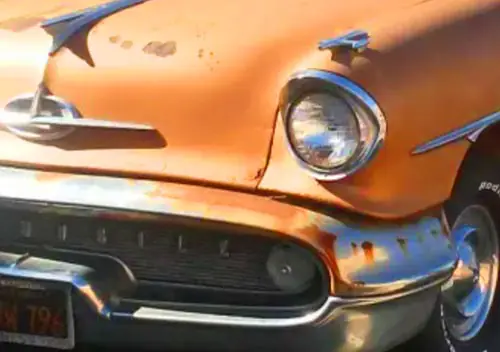
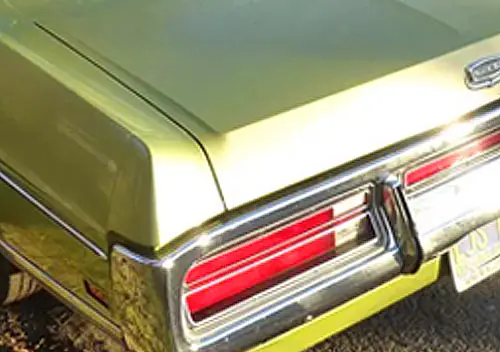
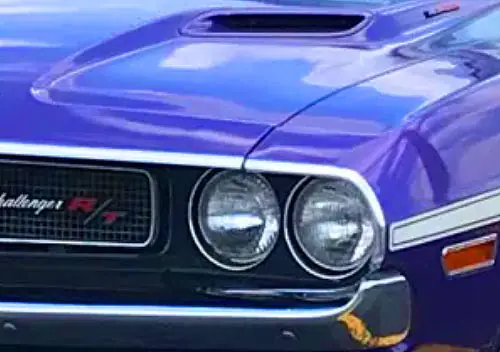


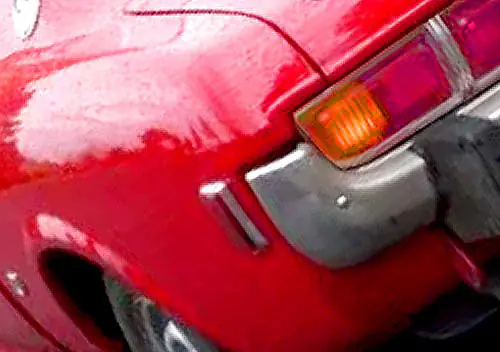
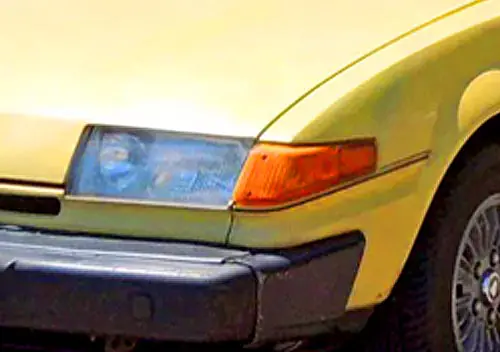

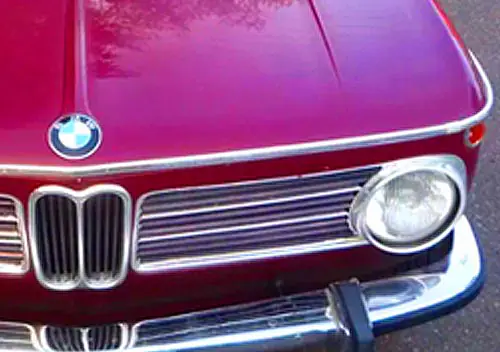
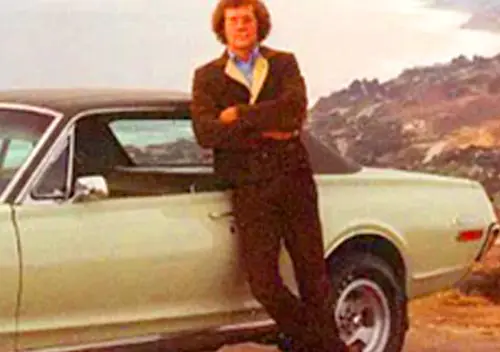

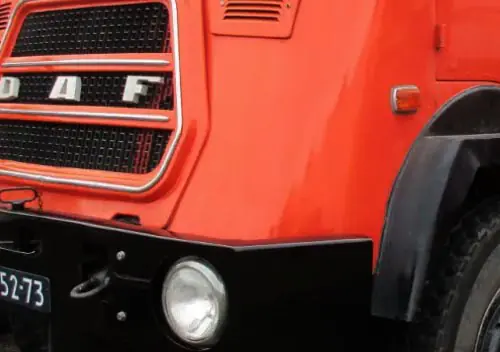
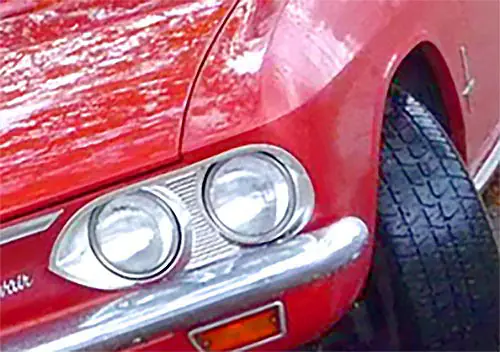
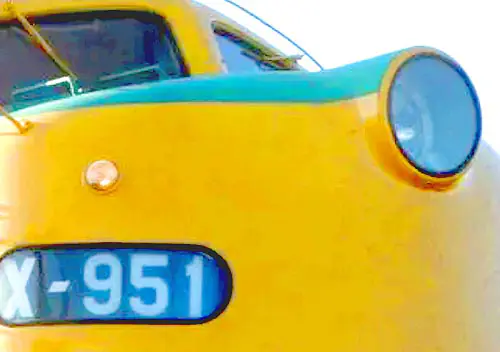
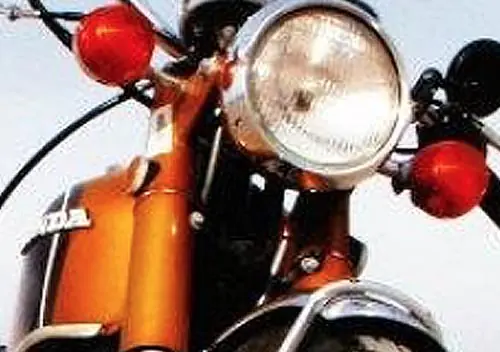
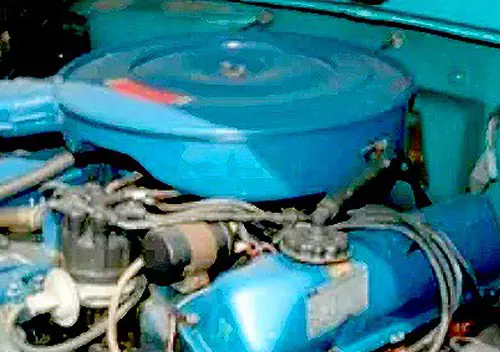
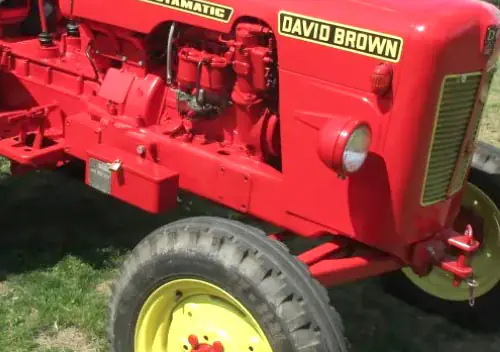


I had a 1984 Colt ‘E’ (strippo) with the base, 64hp 1.4L. It’s worth noting that on the bottom end of the scale, the transmission was just a 4-speed without the ‘Twin-Stick’ gimmick. For the low price of admission, you got a decent quality Japanese import, good for reliable, basic transportation, that was nearly as well built as a Toyota or Honda (certainly better than Nissan).
One of the things I recall was that it started hard, even from new. It would crank for at least 3-4 seconds before the engine would fire. As might be expected, the service department’s response was the typical “They all do that.”
This was also one of the first Plymouths that was truly ‘badge-engineered’ when they began using the ‘Colt – Imported for Plymouth (or Dodge)’ badges on the liftgate. It was, quite literally, the only difference between a Plymouth and Dodge Colt.
Mitsubishi also sold this as the Mitsubishi Precis if I remember correctly, beginning in 1982. Also an English teacher I had in high school in the early 90s, had a 4 door one. I don’t remember if it was a Dodge or Mitsubishi one, but I do remember it was a 4 door or more correctly 5 door.
In the US, the Precis was a rebadged Hyundai Excel (Mitsubishi helped Hyundai with the engineering, so they worked a distrubution deal). The car arrived in 1987, and added a bargain basement model for your local Mitsubishi dealer.
I’m not sure if Mistsubishi offered this nameplate in other markets, but it was never used on the Mirage platform here in America.
I do remember having seen a few of this branded as Mitsubishi’s when I was a kid. But this being Puerto Rico, it wouldn’t be strange. Even tough cars here have have to be certified by the Federal government in order to be legally sold here, manufacturers don’t exactly sell the same trim designations or with the same specifications. Some manufacturers also began selling here before selling in the USA mainland like Suzuki. Interesting enough Mitsubishi here never officially sold the Hyunday based Precis. The ones that I have seen here were privately imported by their owners that moved back to PR from the States, or used cars dealers.
Agreed,letg. Same with Hawaii and Guam. Both had Suzuki SA 310’s/Swifts beginning in late 1983 (Chevy Sprint for Mainland U.S. beginning in 1984.5) and for awhile there were variants on certain cars like the Gen 2 Mazda GLC (323) that was available as a four-door hatch in Hawaii and Guam, but not on the U.S. mainland, at least in 1981-83.
In the 60’s, Hawaii and Guam Toyota dealers also carried the 2-door Corona wagon. I remember seeing a ’67 Corona wagon with 3-on-the-tree that would park up at the communications facility I worked at 1980-82.
Oddly enough, Mitsubishi’s standalone cars showed up in Cal/Ore/Wa before Hawaii (1983 for the U.S. West Coast). Go figure . . .
It seems that auto manufacturers use the offshore territories including Hawaii, as a test ground of sorts to see the reaction to new cars before introducing them in the mainland. Geely was supposed to test their cars here in PR in 2007 in order to began selling them in the mainland in 2008 but the cars failed the IIHS and NHTSA safety tests so the plans were aborted.
And in the usual CC effect, yesterday going home from work in the afternoon I saw a Colt that had both, Mitsubishi and Champ badges. That was odd.
The Hyundai deal was the typical Korean car deal where the Japanese company supplied the knowledge and outdated tech while the Korean company supplied the substandard labor and they shared profits for a number of years.
The Excel was the Colt wrapped with “designer” sheet metal, down to the twin stick trans with a vacuum operated shifter to put it in OD when the position marked 5th was chosen.
It also helped make more volume available to Mitsu dealers since the VRA quotas only applied to Japanese-made cars, not ones from Korea or anywhere else.
Instead of the Plymouth Horizon TC-3 & Dodge Omni O24, the 3 Door Hatchback Companion for the Omnirizon 5 Door Hatchback Models should have been the Plymouth Champ/Dodge Colt 3 Door Hatchback shown here instead since their sizes were much closer and so were their similar designs compared to the O24 & TC3 “companion” twins.
Interesting Pacer comparison. It may have saved AMC if they’d come up with this instead of the Pacer, but that would have taken more resources than they could have mustered at the time. Maybe if they’d taken both the Matador coupe and Pacer money?
I didn’t realize the true reason for the twin stick! That’s exactly the same reason Honda did it’s goofy 5X2 transmission on the CB900 custom, to get the power over to the other side of the motor & meet up with the shaft drive unit.
The US actually did receive the 4 door hatchback starting in the 1982 model year.
Midyear launch (I’ve seen brochures both with and without it) and 1983 brought a mild facelift – late front sidemarkers reach the headlight bezels, early have some painted sheetmetal between them. A pre-facelift five door would be a real find.
Quite right. I flubbed that in a rush to get out of town to go skiing 🙂 I’ve corrected the text.
I can kinda see the resemblance to the Pacer, but I see a lot of VW Rabbit in there. Take a Rabbit, vertically section the back through the C-pillar and move the hatch and rear wheel forward, then angle the grille back, and it looks very close.
The exposed bumpers also look very much like those on my Rabbit. The Rabbit switched to rectangular headlights in 1979 too, the same year that these debuted. The interior shot reminds me of a Rabbit as well, especially an older one than mine was (1984).
Just for fun, here is a Rabbit modified as I suggested.
I am here to tell you that the 4 door was indeed sold in the U.S., as one of them (a 1983 Plymouth version) was Mrs. JPC’s first new car. Her brother bought it from her when she bought the 88 Accord, and then I bought it from him about 1991.
It was a genuine blast to drive. I worked that twin stick just as you said: at every traffic stop, big lever to first, little lever to “P”. Then through all 4 gears, and finally a shift into “E” for my fifth gear. And I got 30-32 mpg all day every day in suburban driving. It was a little buzzy on the highway, so the Accord was the trip car.
The only repair I ever had on it was that a rubber mount that held the shifter into the floor failed and I had the local Chry-Ply dealer do the repair. For some reason, the shifter never felt as precise as it had before, I suspect that the shift linkages were stretched or bent a bit while the thing hung unsupported while the mount was repaired. Just a guess, though.
Unfortunately, it was wrecked when someone in a Tempo pulled out in front of me. This is a car I would own again, having nothing but good memories from driving it.
I remember renting one of these on a first trip to San Diego,California. Myself, and three other bud’s piled in and proceeded to do tour, which ultimately included (if not stopping) driving by/on: the Hollywood sign, Rodeo Drive, Grauman’s Chinese theater, etc. etc. Ah! young and in the military!! We didn’t find the car to be too cramped, since I’m 6’4″, I either drove or rode shotgun. Amazingly, they could be rented with the manual!!! 🙂
What a cutey! I don’t think I’ve ever seen the three door of this generation Colt, the styling really works much better than the four and five door versions (which I do remember seeing a few of when I was younger). It even makes the oddball sealed-beam headlights work (though the front is cuter with composites imo).
Thanks Paul, fascinating read, and a car I don’t think I’ve ever seen (in three door guise at least)
This generation of Colt rocked.
In 82, my Aunt had tired of horsing her full sized Ford van around as a daily driver, so went shopping for a second car. I tagged along for a look-see.
After a look at a Corolla, while the Toyota salesman was pushing a Tercel, we headed over to the Dodge dealer.
We gravitated over to a dark red one, with black interior, the sport package, “big” 1.6 and the twin stick.
Like Paul, I had noticed the resemblance to the Pacer, and I remember commenting on that to the salesman.
As my Aunt hadn’t driven a stick since 65, I took the first turn at the wheel, pulled out onto the street and gave it some gas. Compared to my 50hp Renault, or my Mom’s 68hp 81 Mazda GLC, the Colt was a rocket. iirc, that MCA-Jet engine was a sweet runner, smooth and quiet, and it hauled. The interior materials and fit were better than the 81 Mazda’s (The Mazda was not the top trim)
I also was nominated to drive the Colt home and found the one fly, tight headroom. My head rapped the roof on every pothole.
A few years later, I borrowed the Colt for a week when the Renault hacked up it’s alternator. I pulled off the highway and stopped for traffic at the end of the ramp. When the traffic cleared, I engaged the clutch, and the engine stalled. I restarted, engaged the clutch and the engine stalled again. Wondering what the problem was, my gaze fell on the dash, where I noticed the “econ” LED lit. Oh I flipped the stick into “power” mode, and we took off like a scalded cat.
A few years later, the clutch wore out. My Aunt sold the Colt and went with a Subaru sedan, a bit bigger, and with an automatic. Looking in Consumer Report’s reliability ratings by the late 80s, this generation Colt experienced a lot of clutch trouble. Always wondered if that was the start of Mitsubishi’s long quality decline, or whether it was people trying to drive it in “econ” mode all the time, and slipping the clutch excessively to get underway.
Another great example of a super cool car from what too many people call the malaise era. I really liked these in yellow with the black tape stripes. You don’t see yellow cars any more. I couldn’t for the life of me remember the special stick shift name… twin speed? speed shift? So it’s twin stick AND super shift no wonder it was so hard to remember!
Nice write up Paul.
A tin-can Japanese Gremlin with a larger rear side windows.
In the early 1908’s, while walking the dog near and around Florissant Dodge, over by the service bay entrance, an owner of one of these was complaining to a salesman about his Dodge Colt. Something about the wipers and how expensive the parts were compared to the usual Dodge vehicle.
He decided to order a new car, instead! After they went inside, and after I looked the car over, I didn’t blame him.
Parts were $$$$. My Champ had rare A/C, and the compressor pully fell off, got it fixed, but then whole system died a few months later, and I never bothered.
Also, front wheel bearings would grind and need replacement often. This car was not a paragon of Japanese quality.
Mine had a/c as well, and we never had a problem with it. Also, our car never had wheel bearing issues, either. I guess there will be a bad one of about anything, but ours gave exemplary service its whole life (although it died young, maybe 70K miles or so)
Datsun is the exception to Japanese companies immediately making good FWD cars. Their early efforts were pretty flawed.
They all used first-year buyers as beta testers, too. Just that any really new model was sold exclusively in Japan for that first year, so we never did find out what teething troubles they had back home and the product was well-sorted by the time it was cleared for export.
Indeed, the F10 was a bit of a dog’s breakfast. I remember they had a small fan aimed at the carburator to fight vapour lock, or something.
It was to prevent after boil, as were the vents in the hood. One thing they did get right was the way to replace the clutch w/o the need to separate the trans from the engine. Simple enough to do in 30-40 min.
Had a lot time both in the front left and front right seats of these, back in the day. Two of my friends had the yellow/black “sport” models, of whom one eventually got a turbo one. Three more friends had 1.4’s; one with TwinStick, one without.
I have no negative memories of them except one (1.4) kept the car so long the hood hinges eventually rusted free of the car.
Downshifting on a mountain road, one knee jammed against the steering wheel to free both hands, was – ahem – interesting.
A more-than-usually-mindless Plymouth dealer kept me out of a new 1.4 TwinStick one day, and when I finally screamed enough to get my deposit check back, went next door to the Datsun dealer and bought a 310, which turned out to be a rather nice interior installed in a much less satisfying car to drive than the Colt/Champ.
I had one of these – a four door ’84 Dodge Colt E. Mine had an automatic. I bought it as a used car in 1988 for winter use in the midwest – so I could park my RWD nice cars.
The Colt served me very well for two or three winters. Reliable, durable and really quite well built. It looked pretty good too – maroon with a matching color interior. Records indicated it started life as a leased car from suburban Chicago; I bought it from a used car lot and I believe the price was quite reasonable compared to a similar vintage Honda or Toyota. This Mitsubishi experience led me to buy another one – about which I will write a bit when we get to that era of these cars.
I had two. The styling of these cars was fantastic, a “stretched skin” aesthetic that has not been done often… at the moment I can’t think of another car that did this although I know they existed.
I bought an ’81 Champ in ’84 after my ’76 Corolla’s electrical system got fried while being serviced at Wellesley Toyota. Unbeknownst to me, the Champ was the first car I had owned with a fresh/recirculating option for interior air. Five of us piled into it one January night to go clubbing, and in short order the windows frosted over—on the inside. I drove at a crawl while my buddy continuously scraped the windshield clear and I cussed. Once we figured things out, the car was a hoot to knock around in.
I enjoyed the car a lot, but there were a couple insulting things about driving it, besides the fact that it was so tiny. “Champ” was a cheesy name, and I’ve always suspected Chrysler changed it to Colt for this reason alone. The other insult was that in the 80s, Enterprise car rental in Boston would deliver their cars to their customers. They’d tow a Colt behind the rental car and after delivery would return to the agency in the Colt. It sure made it feel like less than a real car.
I later found a twin-stick version for sale that was a hoot to drive, but someone bought it before I could offer on it. It was orange with multi-colored stripes– pretty cool in an 80s aesthetic way. I then bought a low-mileage ’84 Colt in 1985, and still had the ’81 for a while. A year or two later, the second gear synchros acted up on the ’84. A rebuild did little to help it, and I eventually traded it on a new ’87 Jetta GLI.
Do we know the model years on the examples? I can tell the gold one is slightly older than the red one, judging by the headlight surround detailing.
It’s 1982, and I am assigned to a faltering, underperforming store in the hinterlands. This point hasn’t met projections for five years. The used cars are floored at two different institutions- simultaneously. I am no genius, but with the corporate checkbook to backstop hiccups, we turned it around to such a degree that we needed cars to keep our momentum. I called all area points to buy whatever they’d part with. One place agreed to give us five Colts – one which was the ADP-worthy five door. So, I called my sisters, who knew every pretty girl within 50 miles who owned a driver’s license, and off they went with about one hundred thousand in checks. I went golfing. Monday morning I was perusing the paperwork and came upon several blue-colored MSO’s. We were a Dodge store, and all Dodge paperwork was red-themed. I went out, and sure enough, I had purchased a truckload of Plymouth’s. No bonus eligibility. No primary warranty coverage. No brains by the so-called GM. But, we made them go away by advertising them in a nearby large city with a Chrysler-Plymouth store at pure invoice. When they were going for over Monroney. A very difficult lesson that the dealer Principal never allowed me to forget. Oh, yeah, these were great cars for the money, and the Turbo was a steal at the time. The first buyer of a Turbo learned of the oversteer problem when he found the ditch across the road when leaving the store after his purchase. Thank the fates it was a total, and we had him in his second ten days later. I’m betting his insurance is still expensive – 30 years later. The halcyon days of American -built auto retailing. Actually the false calm before the storm. When 14 million was the holy grail number. Seems archaic in retrospect. Like the Colt with that funky twin stick.
Not bad little cars those Mirages and the number left in daily service here is a pointer to how good they actually were, many survive along with their Indonesian built cuzzies the Proton Saga. Aussie got one badged Colt 45 at one point.
Aren’t the Protons Malaysian, not Indonesian?
I posted before about my 81 Champ. Was fun to drive and great MPG. But it didnt have the known durability as Hondas and Toyotas of the time.
I got it used in 1985 with 45K miles. First thing to go was the carburator, and it was $450 just for the part, in 1985 $. Had it until 1988 and replaced many major parts, including clutch. By 85K engine main seal popped. Most costly repair was master cylinder, had to go to Mopar dealer, independant shops woudn’t touch it. Carb cable broke on a trip to LA, car really was meant for short term use.
Can go on and on, but needless to say, Mitsu isn’t near the powerhouse as Toyota, Honda, Nissan, and Mazda. If they go bye bye from US, I won’t care.
“And to a man, they succeeded, rather spectacularly at that, and non more so than Mitsubishi with their superb new Colt/Champ/Mirage. ”
I bought my car based on rave reviews such as above and “rags” [C&D].
“Always wondered if that was the start of Mitsubishi’s long quality decline”
Yep!
I really liked these when they debuted.
The AMC connection with the styling is very strong. One of the models AMC included in its traveling “Concept 80” display in 1977 was the “Concept II.”
The Concept II’s overall shape, and quite a few details, look very similar to those of this car.
I have found an eerily the same color and same year for both the light blue metallic 1982 Dodge Colt 5 Door Hatchback and a 1982 Dodge Omni 5 Door Hatchback. Both cars were almost similar in size much like the analogies of their future successors the 1994 Dodge Colt 4 Door Sedan and the 1994 Dodge Neon 4 Door Sedan which will be discussed some other day here.
In high school, my good friend John had a turbo Colt. One Thursday night in 1984, we drove down the the Fremont (California) Raceway for their weekly “Grudge Night”. Sub 14 second cars were allowed to carry a passenger.
I will never forget when the tree flashed green. John popped that clutch and the front end of that Colt started bouncing hillariously as it was looking for traction–almost as if we were a “hebby Chebby” with hydrualics. I think we ran a 14.7….laughing all the way.
The Turbo was an absolute Hoot!
Haven’t seen one of those in probably about a a decade.
“…And just to be different (as usual), in Canada the names were reversed. The Dodges were called Champ; and the Plymouth Colt…”
I don’t believe this is the case – I’m almost certain that these were sold as Dodge Colt and Plymouth Colt in Canada from the start, the Plymouth Colt name already having debuted in 1976.
I agree Stumack. This is how I remember it as well.
My apologies; I flubbed that too. I got that transposed with the earlier Colt/Cricket.
A work buddy of mine bought a 81 Champ new.
It had a radio for options and that was about it.
1.4 engine and non-twin stick 4 speed transmission.
He was the type of person that thought a trailer hitch was licence to tow anything, and this Champ bore the brunt of that thought process.
Despite his constant abusive towing with the Champ, I believe it was a trouble free car that served him well for the 4 years or so that he owned it.
This has been a terrific series, and this era Colt is hands-down my favorite. It has always had a certain, indescribable appeal to it.
I found this 1980 Dodge Colt RS at a Whole Foods parking lot just off the PA Turnpike two years ago. The design seemed to hold up well, the color scheme, not so much.
Wow that brings back memories, I owned this exact car for about 6 months in 1988-89, except mine had a pop up sunroof, with the 1.6 and twin stick it was fun to drive. I stopped driving it when the starter quit and bought a brand new ’89 Colt E which by then had gone to a conventional 5 speed and 1.5 fuel injected engine.
My family was a real Colt family for a while, my father had an ’81 Champ, ’85 Colt, ’86 Colt, and ’89 Colt. I Had the ’80 Colt RS then ’89 and ’92 Colt E and GL. My sister had an ’85 , ’88 and finally a ’93. Always basic but reliable transportation.
Well, they could always easily find their car in the parking lot.
This car Rocked. My first car. In PA.
Interesting Jan. 1980 story about the Mitsubishi-Chrysler relationship–I sure don’t remember this at the time:
That’s a nice slinky piece of design. There’s a bright green one driving around Melbourne, but I haven’t captured it yet. This has been a great series Paul. Cheers.
I had to do a double take. That first picture is exact duplicate of my first Colt. A great car. Started a family with it. I loved to amaze my friends by up shifting in reverse.
By the early 80s my father had finally abandoned GM and opened a Chrysler-Dodge store. Still in uni, I had an 83 Colt RS twin-stick (black with red trim and black and red interior) followed by a next-gen 84 Colt Turbo 5-speed (silver with maroon inside). I loved them both dearly. They were faster than my TR7 and orders of magnitude more reliable.
Within a week or so I had mastered the art of rowing the twin-stick up and down through all eight gears with one hand. It wasn’t very difficult physically, but did require a bit of mental concentration! Incidentally, the five-speed in the subsequent Turbo was the identical transmission–shifting into fifth merely actuated a solenoid that engaged the lower of the gears in the secondary box (which we jokingly referred to by the trucker nickname for two-speed rear ends, “ruxle”).
My Grandmother had a yellow five door Mitsubishi Colt, in which she unfortunately died in a crash…. And my older sister had a sedan in the same colours and spec as the featured hatch back, she loved it and it took a hiding without problems.
I recall the Colts and Champs got great reviews, and seemed like a good car to consider as a first car. But at the time, I found their styling so homogenous. Bordering on blase. However, innovative and practical they seemed. In 1980-81, I couldn’t warm up to their looks. What seems clean today, seemed bland to my younger eyes back then.
Funny thing is, I found the similar design of the new 1981 Mazda GLC, more refined looking. If only because it had crisper styling.
It seems to me that in Canada we had colt vehicles similar to these ones which were sold at fire-sale prices alongside the newer generation of Colt/Mirage vehicles even in the early 1990s. They were probably the facelifted version which directly followed this series but they still looked much the same – with slightly squarer styling and flush headlights. Were called Colt DLs as I recall and sold at both Dodge and Plymouth dealers in the pre-Neon days.
I’ve never had any first-hand experience with these but my partner had an early 1980s one he bought used a few years old. Only thing he ever told me about it was that it was expensive to fix and that it held water if left parked in the rain. He didn’t have it long before getting a BMW 320.
You’re correct in remembering that it was the next generation car, which lasted in Canada through 1992 (I believe) as the “Colt 100E”, while the up-to-date model was the “Colt 200”. These were definitely very plain and offered at a low price. They were built in Thailand. I had a look at one of them in 1992, but got into an auto/AC Shadow for not much more ($11k +/-).
I had an 80 with twin stick and the 1.6, Put a header on it and engine would rev quickly and smoothly to 7000 rpm. Also hit my head on the roof on bumps. Mine had dual electric remote mirrors with joystick control. Unusual at the time. The seats were small with low backs and everything seemed lightweight and fragile. But a fun car.
Picked up one of these in the late 80’s for mom to drive. It was an ’81 with the 1.4 and 4spd stick. At the time it had 440K km on it. The first owner had cut a notch in the dash every time the odometer rolled over. It was not very fast off the line but it was a real trooper. In the end it was brought down by a deer. The car was stopped when the deer hit it caving in the passenger door and fender and breaking the windshield. The insurance company wrote it off and sold it back to us for a scrap value of $75 reinsured it and we continued to drive it after bashing the fender away from the door. A week or so later when I went to get the money that was supposed to be used for new glass and other parts I found the women had spent it on a shopping spree. I drove it in to the scrap yard just before the odo rolled over for the 5th time.
My brother had one of these as his first new car. I bought his 1969 Torino GT from him and purchased one of these little transportation pods. Of course, in 1980 anything that got over 10MPG was wonderful, as fuel prices were approaching $1/gallon again.
Funny story about the purchasing of the car: Among my siblings, I’m the motorhead of the group and I’m also the youngest of the four. Usually, they would ask my opinion, listen to my reasoning, debate with me and them go and buy whatever they wanted in the first place.
Of course, in the summer of 1980, Volkswagen Rabbits, Honda Civics and Toyota Corolla Tercels were the standard-bearers of the class. However, you weren’t going to go the lot and buy one. Each one of the dealerships had their sharks waiting for these guppies to come by and inquire about a car. Various stories were told, but the fact was if you were truly committed to buying one of these cars, you were going to pay. Dearly.
At this point, my brother is casting about for alternatives when he comes upon the Colt. To be accurate he looked at the Pinto, Monza, Omni 024, LeCar and the Fiat Strada, but on all of them, the combination of price, payments and interest rates (which were incredible!) didn’t work for him. The hometown Dodge dealer was willing to work with him on a Colt (but not an Omni, I don’t remember why) and he was a proud owner the very next day.
He had the car for five years, as I recall it was a good little car. His wife was involved in an accident (similar to the one I just was part of) where a person entering the road could not see over the snow piles at the entrance of the parking lot and broadsided the little Colt. Got to love living on the Eastern side of the Great Lakes…
It spun around several times and ended up in the culvert. My brother’s wife was mildly injured and the car looked grim. Strangely, the insurance company did not total it (this was in 1983 or 84) as it was rather old. They fixed it and he drove it for another 18 months or so until he got his 1985 Pontiac Grand Am.
One of the more amusing aspects of the repair of the car was some sort of glitch in the wiring harness, where if you honked the horn, the wipers took a swipe. We guessed that one of the bodyshop repair people may have spliced a couple of wires together incorrectly. It was great fun at parties, although it may have pissed off the neighbors to hear a car horn honking intermittently throughout the night…
I’d always heard the turbo version of this car was a handful. I had a friend of a friend of a friend who had one of these. I remember going for a ride in it and remember the feeling of acceleration when the boost kicked in, but not much else. By the time that Mitsubishi started selling their Mirage model in the late 80’s, these things had all rusted away in Northeast Ohio.
Besides, the successive Mirage model was a way better car, IMO. I’m hoping there’s a write up coming on one of those.
Great write-up… I was hoping you’d mention the twin-stick and the turbo. I especially liked the link for the GTI comparo. I remember a Turbo Colt in my hometown for most of my childhood but it has long since disappeared. It’s a shame so few are around anymore (I haven’t seen one since the early 90’s). Their rarity makes the first-gen GTI as common as a late model Civic.
When the handed down from my Parents’ 1972 Buick Estate Wagon got totaled, I had to search for a new care. I was commuting 45mi/day and wanted something that got good gas mileage (unlike the 12mpg Buick). I test-drove one of these and the “twin-stick” transmission was interesting, but I liked the 5-speed Honda Civic LX a lot better.
I ended up buying an 18mpg 1972 Dodge Dart from a friends family. Not such great gas mileage, but only a $400 purchase price.
One interesting note about the Colt was that I shopped for it at Reedman Dodge in Langhorne, PA. It was a huge dealership in a town filled with huge dealerships. They required that all the test-drives be conducted on a closed test-track that threaded around the dealer lot. It was fun, a little like hot lapping on a race-track. They had no speed limits and no need for a ride-along sales-rep since you couldn’t leave the dealer’s premises. The track was too short and too twisty to get any real speed up, but I had a good time.
I only have experience with one of these. One of my best friends in third grade, Joe, had one in his family. It was his mom’s car and was a silver Champ three door with black interior. I think I rode in it once or twice but don’t have any memory of it. Shortly before he and his family moved away, the Champ was traded in on a new navy blue ’90 Cherokee four door.
Great feature! This brings back a lot of memories. I remember my dad taking the whole family to pick up his new 1980 Plymouth Champ. We kids got to ride along with dad on the trip back home in the new car. It inspired a lot of comments and attention from family and friends. It was just so out of place with the other cars of the time in our rural Minnesota town. Our other car was a 1976 Impala, The Champ was six feet shorter and had an engine 1/4 the size. My dad was a small town pastor and had to do a lot of driving around the area, so that’s why he had sought out an economy car. I learned later that he had looked at the domestic competition, like the Chevy Chevette, but it just didn’t stack up. The Champ was a base model, but it came fairly well equipped for the time. The vinyl bucket seats would recline, and the rear seat folded almost flat. It had an AM radio and a powerful heater, and the interior was well trimmed and carpeted. It had the 1.4l engine and the twin stick manual. The quality of the manufacturing was evident. Even parts that weren’t normally seen had a fine finish and exuded quality, unlike what malaise era Detroit was producing. My dad drove the car not only around MN but also on several long trips to Texas, West Virginia, and elsewhere. As it aged, it developed a few problems. The automatic choke broke and Chrysler wanted hundreds of dollars for a new carburator, so the first start of the day required a screwdriver in the butterfly valve and a shot of starting fluid. A deer smashing into a fender resulted in a dent that would have been too expensive to repair professionally, so my dad took the fender off and pounded it out by hand. He ultimately drove the car almost 200k miles before moving on to the latest economy car, a 1990 Geo Metro.
For Paul Niedermeyer: the 5-door hatchback sedan bodystyle was first introduced for the 1982 model year (in late 1981). That was also the last year the Plymouth version went by the “Champ” badge.
Speaking of the 5-door Colt hatchback, I’m wondering if Chrysler’s decision to drop that bodystyle at the end of 1985 (the only year it was offered with the Colt’s refreshed body) was because Chrysler didn’t want the Colt to eat into sales of their other (and American-made) front-drive hatchback series (the Dodge Omni and Plymouth Horizon)?
I had an 84 Dodge Colt, the only car I’ve bought brand new for only $ 5000.00. Now a days it’s hard to find a decent used car for that price. It was a 1.4 liter 4 speed, and a very reliable car. Also very economical, getting up to 47 mpg hwy !! I had it for 4 years, but I was tired of our 2 big dogs in the back seat panting on my neck. So I traded it for a Toyota truck with canopy.
Does anyone have a Canadian price list for a new 1984 dodge colt. All models
My stepdad bought me a Plymouth Colt when I was 12 to teach me how to drive back in 1992. By the time I turn 16 and was old enough to get a license I had driven enough in the Colt to be a proficient driver.
Whenever it would break down, my step dad would teach me how to fix it but I would do all the work. We used to take the car out every time it snowed because I would never get stuck. And it really never broke down until it reached almost 275000 miles. At that time the transmission broke and we were unable to fix it.
I have very fond memories of my Plymouth Colt.
I would love to find a 1981 Dodge Dolt RS…I had one and it was the best car I have ever own. Mine was Red and Black and if the price is right, I would get one again today. Only need to find one.
Can anyone help?
Wow great post. This car – the on pictured (gold w/black stripe) I bought used (1981 bought in 1985) just after graduating college, it had 40k miles, cost 3995 and my payment was $79 per month. I loved this car. While basic in many ways, it was solid handled well and using the power mode was quite peppy. In the 3 years I owned it the only thing I did was change the oil and one tune-up. I moved twice using this car and despite its small size, with the rear seat down the back was cavernous I loved it so much my next car was a 1987 colt – my first new car, which was a fabulous car. Compact yet loaded with features and stylish. My brother and sister owned the car after me – it was in our family 10! Years that’s how beloved this car was.. thanks for there memories!
You forgot one thing
Pure unadulterated fun!
Like riding a go kart on the street
Floor shifted auto was a blast
Put it in neutral, redline it, throw it in gear and smoke the tires!
It was my very first car
Bought one for $250 in 1988
And I beat the crap out of that poor little car
Like any 16 yr old boy does
and it just kept going
Had it for two years and the only repair I ever did to it, was replace a fuel filter
Then we moved to California from Arizona
And my dad pulled a U haul trailer with it !
Then I used it to trade in on a new 91 colt
And ever since then at least once a year I’ll look on Craigslist just in case another one ever pops up in my area for sale
For nostalgia sake
I forgot about these but there are still some around I hired a new one from Avis in early 83 to go to Taupo from Whangarei a mate of mine had a job developing a proposed geothermal power station in the Philipines and was dispersing his fleet of cars I needed something reliable the 68 HL Holden wagon I had was rolling junk so I’d bought a 63 Humber 80 from my mate and needed to collect it, the one thing about the Mirage that struck me as sub standard was the doors with no external rain gutters the wind got between the door tops and the roof causing the door tops to flutter, ok this was at well above the speed limit the little car did go ok, but I thought they could have done that better of course no flutter at 100kmh which is Japanese maximum speed their cars seem designed around.
The Twin Stick automatic reminds me alot of the 10 speed bicycle I rode when I was a teenager. I never did figure out which combinations of gear shifts would be in proper order, nor was it necessary to. The only time I really cared about which of the two front sprockets were in use was when I wanted highest gear or (less often) lowest gear. Otherwise I just chose between the five ratios allowed by the rear derailleur. I would have been better off with a 6 speed (1×6) than 10 speed (2×5). In the Champ, I’d find it distracting compared to a normal 5 speed every time I had just left the freeway via an exit ramp that ended in a red light or stop sign and had to shift two levers to get back to the normal first gear.
The gold example, minus the decals, looks exactly like my friend’s family car.
I first saw it around 1982, when I started going to his house.
I had never seen one before, and kind of liked it.
It looked very cleanly styled and functional, and even a little sporty.
In pictures, the Pacer resemblance is obvious, but I didn’t see it at the time.
It never occurred to me until I read it here, actually, because in person it looked so lean, whereas the Pacer looked so bulbous and bloated.
Now I cannot un-see it; it’s like a slimmer twin of the Pacer.
Eventually, I see the obvious, after looking at something from every other way first.
The four door was there from the beginning in ’78 outside NA. They were called Mitsubishi Colts here. The 1.4 engine was an Orion, and the 1.6 a Saturn, different engine families. The belt driven Orion is better and smoother, can be absolutely mashed every day and survive the End Of Days (in fact, it’s known some will rise from auto graveyards at the end).
Interestingly enough – or not – performance was very little different between the two sizes, and very little different whether driven everywhere in High or Low.
We got a stripper here called the Colt 45 (dear god), and rather unbelievably, they blanked off the mechanism for the twin shift, presumably to entice folk to get a posher one with it. It couldn’t have been actually cheaper to tool up to do this, I’m sure of it.
Pininfarina, that vaunted house of European style, must’ve liked the old thing a lot themselves, since the later Peugeot 205 and later again 306 sure have a lot of the Colt about them, especially as five-doors.
These little cars were tough and likeable, but the FWD Mazda 323 – a Golf made by people who cared but sold for way less than the people who didn’t at VW – showed the flaws of rolly handling, dead steering, ordinary gearshift (on either stick), flappy door tops and general looseness of body that made the Colt feel dated quickly.
And they were sure dated by 1990 when the last of them were made here!
I really liked the styling of these when they came out. Mitsubishi never went down the UGLY path exemplified by Datsun, Toyota, and Honda, with ugly lines and ugly detailing (yes, I think the early Civics and Accords were UGLY with lots of lumpy detailing, weird unnecessary curves and indentations, plastic doodads, taillight shapes that were sort of melted and didn’t go with anything else on the body, unnecessary moldings and trim, weird lines and lumpy, bulgy curves). But these were a real breath of fresh air with a simple, clean shape with flush glass, thin pillars, a beautiful wedge, and simple to no detailing. This was the first generation of colt to achieve any real success around here and they were briefly ubiquitous and then just as quickly all vanished. This took the Basic Econobox and made it stylish, unlike so many of its competitors which all looked the same.
I see a lot of people had good experiences with these but they never garnered the loyalty or reputation that Corollas and Civics did. The next generation fell off sharply. Perhaps the people who originally bought Colts went on to bigger and better cars, but they didn’t seem to get repeat buyers. Mitsubishi did go on to make flashier and more interesting cars.
It’s interesting to think that only 4 years before this car debuted, the only cars at all comparable might have been the Civic or Rabbit. Everything else was stodgy, space inefficient, rwd, heavier, ill handling, and if American horrible quality and if Japanese had that plastic toy son of Rodan styling. This was a huge leap forward we don’t see today.
Very interesting article. I am ex-Mitsubishi designer and was working at the design studio where the 1st. gen. Mirage was under the design development though I was not with the team. Your assumption about AMC Pacer is right, the designer, Masao Oshima, was inspired by Pacer then. A Pacer was brought into Mitsubishi Tech center and they check out so called “flash surface design” in detail. It was an important feature, created by AMC or GM, Buick Skyhawk at that period, in term of car design evolution. Mirage and Honda Prelude 1st. debuted with this feature in the same year in Japan. Some years later Audi 80 applied and developed this feature. Aerodynamics became a very important issue from late 1970’s.
By the way my friends and I are making a website called “Mitsubishi car design trails” now and many design stories of old Mitsubishi cars including Mirage will be posted. It will be illustrated by a lot of images from Mitsubishi Motors archive.
I had one for a while and liked it. A pleasant cheap car. Not a great one by any stretch, but a pleasant one. The Plymouth version IIRC, unfortunately the little 1400, but it felt quicker than it was. Or maybe it just had a good torque curve and the 8 speeds helped, but I don’t think it would do 90. At around 120K it started using oil, and smoking. Turned out the valve guide seals had come off the valve guides. Not a difficult fix, but I had to pull the head.
But the 8 speed or twin stick. That was the good part. I found it shockingly easy to go from 1 low, to 2 low, to 2 high, to 3 low, to 3 high with one hand in one motion for any single shift. Of course from 3 high thru 4 high it was all about the same.